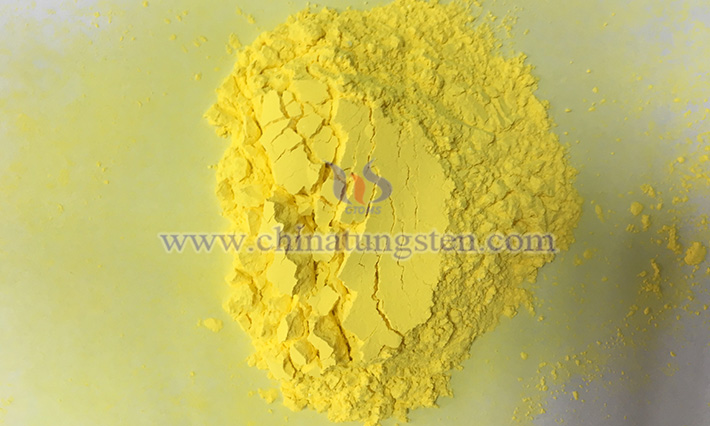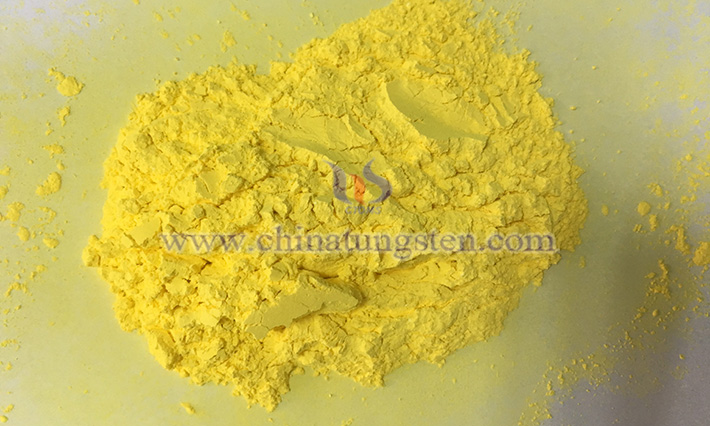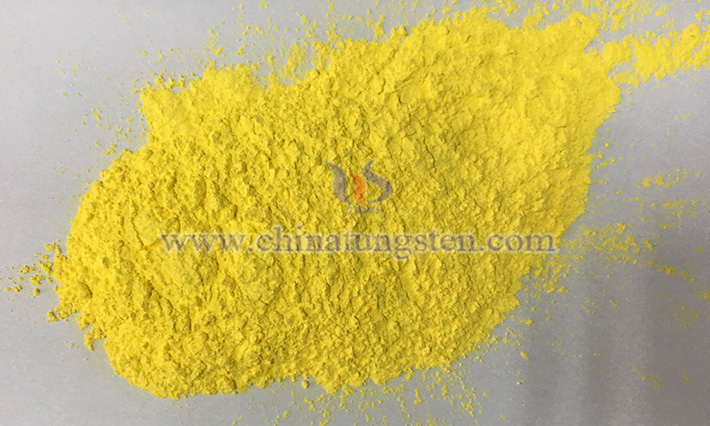What Does the Crystal Structure of Yellow Tungsten Oxide Look Like?
- Details
- Category: Tungsten Information
- Published on Saturday, 05 April 2025 11:18
In the expansive realm of modern industry, yellow tungsten oxide (WO₃) shines as a vital yet understated star, playing a critical role across a wide range of applications. From the electronic devices we use daily to advanced fields like automotive manufacturing and aerospace, WO₃ is omnipresent.

In the production of hard alloys—materials renowned for their exceptional hardness and wear resistance—yellow tungsten oxide serves as an essential raw material. These alloys are widely used in cutting tools and mining equipment. In the petrochemical industry, WO₃ acts as a catalyst, accelerating chemical reactions, enhancing production efficiency, and reducing costs. In the realm of paints and coatings, it transforms into a high-quality pigment, imparting a vivid, long-lasting yellow hue that not only enhances aesthetics but also improves weather resistance and durability.
Given its significance, what exactly is the crystal structure of yellow tungsten oxide? What microscopic architecture grants it these remarkable macroscopic properties? Unveiling this mystery invites us to delve deeper into the secrets of WO₃’s crystal structure.
The Crystal Structure of Yellow Tungsten Oxide
As a transition metal oxide, yellow tungsten oxide has a crystal structure fundamentally built around octahedral units. At the heart of each octahedron is a tungsten (W) atom, surrounded by six oxygen (O) atoms positioned at the vertices. These WO₆ octahedra connect through shared vertices, forming the intricate framework of WO₃’s crystal lattice. This connectivity lends the structure both stability and regularity, underpinning many of its physical and chemical properties.
Imagine a construction analogy: the WO₆ octahedra are like precisely shaped bricks, and the vertex-sharing connections act as cement, binding them into a grand crystalline "edifice." This structural foundation endows WO₃ with excellent thermal stability, enabling it to maintain integrity under high temperatures without decomposing or deforming. It also influences its electrical properties. The specific arrangement of W and O atoms restricts electron mobility in a way that gives WO₃ its semiconductor characteristics, opening up potential applications in electronics, such as gas sensors that keenly detect changes in environmental gas concentrations.
However, WO₃’s crystal structure is not static—it is highly sensitive to temperature, transitioning between different forms across various temperature ranges:
Above 740°C: Tetragonal phase. The WO₆ octahedra arrange with a symmetry characteristic of the tetragonal system, achieving a balanced state of atomic interactions.
330–740°C: Orthorhombic phase. The arrangement and symmetry adjust to accommodate changes in atomic thermal motion induced by the temperature shift.
17–330°C: Monoclinic phase. The crystal adopts a different structural profile suited to this range.
-50–17°C: Triclinic phase. At these lower temperatures, yet another distinct arrangement emerges.
The reason temperature exerts such a profound influence lies in its effect on atomic thermal energy and interatomic forces. As temperature rises, intensified atomic vibrations prompt the atoms to reposition themselves to maintain structural stability, triggering phase transitions. The tetragonal phase at high temperatures may enhance WO₃’s thermal conductivity, making it valuable for high-temperature applications, while the monoclinic or triclinic phases at lower temperatures could influence its optical properties, offering unique advantages in optical devices.

Non-Stoichiometric Nature and Its Impact
In nature, yellow tungsten oxide rarely exists as a perfectly stoichiometric WO₃ with an exact 1:3 tungsten-to-oxygen ratio. Oxygen vacancies are common, leading to a composition often expressed as WO₃₋ₓ (where x ranges from 0 to 1). This deviation results in some tungsten atoms adopting lower oxidation states (e.g., +5 or +4), disrupting the ideal atomic arrangement.
From a structural perspective, oxygen vacancies introduce defects and voids into the otherwise orderly WO₆ octahedral network. These imperfections alter the charge distribution and interatomic forces within the crystal, impacting its properties:

Electrical Properties: Oxygen vacancies increase the concentration of free electrons, modifying WO₃’s conductivity. This makes non-stoichiometric WO₃ behave differently from its ideal counterpart in electrical applications.
Gas-Sensing Properties: The presence of defects enhances WO₃’s adsorption and reactivity with certain gases, boosting its sensitivity in gas sensors. For example, when detecting nitrogen dioxide (NO₂), oxygen-deficient WO₃ undergoes specific chemical reactions with the gas, altering its electrical properties. These changes can be measured to accurately monitor NO₂ concentrations.
In summary, the crystal structure of yellow tungsten oxide—rooted in its WO₆ octahedral framework and modulated by temperature and oxygen vacancies—underpins its versatility. This microscopic architecture is the key to its macroscopic prowess, driving its indispensable contributions across industries.
- Chinatungsten Online: www.tungsten-oxide.com
- CTIA GROUP LTD: en.ctia.group
- Tungsten News & Price: www.ctia.com.cn
- Molybdenum News & Price: news.molybdenum.com.cn
- Tel.: 86 592 5129696; Email: sales@chinatungsten.com



 sales@chinatungsten.com
sales@chinatungsten.com